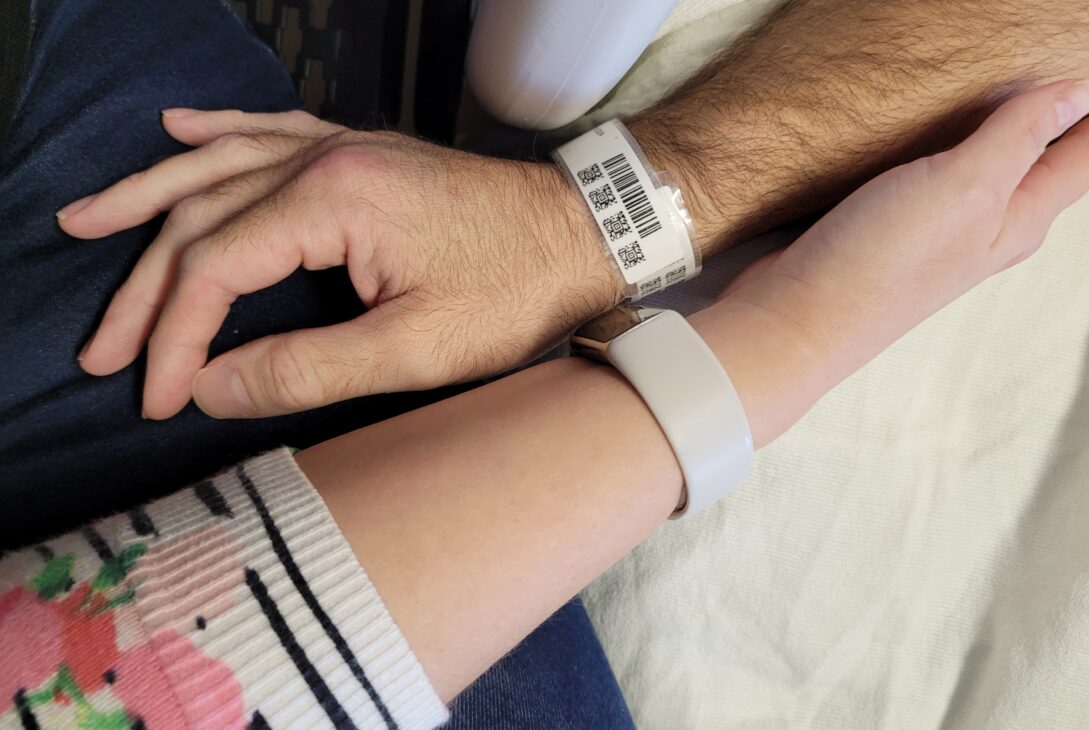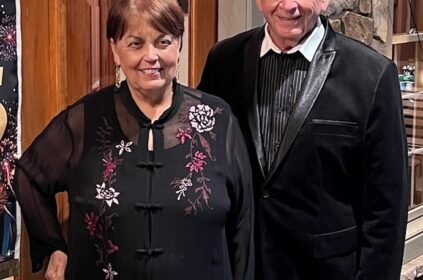After two hospital stays for recurring pneumonia and pulmonary embolism respectively, my partner was diagnosed with stage IV adenocarcinoma lung cancer in June 2024. The subsequent week was a whirlwind of emotions, doctor appointments, and a very important molecular blood test.
We’re fortunate to live relatively close to a large cancer center, so during our first visit with his thoracic oncologist, he brought in two other oncologists, radiation and orthopedic, to consult on my partner’s condition. It was dire, so we were scheduled for chemo three days later and palliative radiation the next week. We also met with his navigator and social worker, and we would later meet with his team’s nurses, PA, and pharmacist. Without the resources and care from a large facility, his prognosis would likely be much poorer, and their knowledge and expertise has been so valuable to us.
So, remember that molecular test? After a simple blood draw, the samples are sent to a lab to determine what type of mutation there is, which then indicates what targeted therapies are available to him. It usually takes two-four weeks, but his results kept coming back inconclusive. Based on his medical history, his doctor knew he had a mutation, but the tests weren’t picking up any known mutations.
After his doctor presented his case at a lung cancer conference with other medical experts, we finally got an answer at seven weeks; my partner has an extremely rare Rad51 fusion mutation, which has only been observed a handful of times worldwide.
Being told that there’s no FDA approved medication to treat your cancer, and that it’s so rare that you’ll never have a clinical trial for your specific mutation was frustrating, terrifying, and isolating. And during that same appointment, we also learned that the chemo was only holding the cancer stable, not shrinking it. Que even more emotions, panic, and new plans of action.

Based on the case studies his oncologist found, our best bet was to try an existing medication to treat a known mutation (EGFR)- if the insurance company would cover it. After an initial denial and two appeals, his team was able to secure an external peer review, which dictated that the health insurance company must cover the medication. It was a relief to have coverage and finally start taking a drug that would begin to make a dent in the cancer. He has been on it for a few months now and his condition has greatly improved. Coughing, breathing, and general mobility are better, but the medication doesn’t come without side effects. It’s also known that the cancer will build a resistance to it, so eventually we’ll be seeing what clinical trials he’s eligible for.
Even though we still have a difficult road ahead, we’re thankful for the time that we have now. It’s only been seven months since his diagnosis, but I am so inspired by his resilience and strength. So, five hospital stays, a dozen X-Rays and CT scans and MRIs, three procedures, ten rounds of radiation, and ten rounds of chemo and counting later, we’ve found a lot to be hopeful and thankful for. We’re hopeful that his condition will continue improving, and we hope that he will have more treatment options in the future. Medicine is progressing so far and so fast that even though my partner will likely never see a Rad51 specific drug, there are still options available now, and they’ll only continue to improve. And I’m specifically hopeful that if someone else is diagnosed with the Rad51 fusion mutation, they come across this article and don’t feel so alone.
adenocarcinoma caregiver stories gene mutation lung cancer patient stories Rad51
Last modified: February 6, 2025










